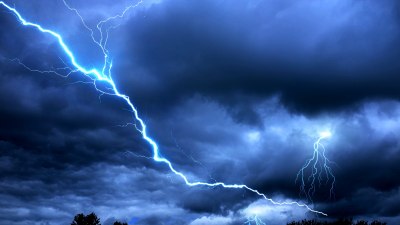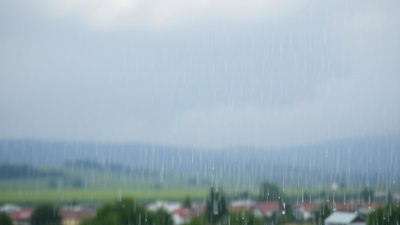Why Do Clouds Sometimes Glow
Explore the fascinating phenomenon of glowing clouds and their captivating beauty.

This image was created with the assistance of Freepik
When we gaze at the sky, we often see clouds in various shapes and shades. However, there are moments when these clouds take on an ethereal glow, transforming the sky into a canvas of luminous colors. This mesmerizing phenomenon can leave observers in awe, igniting curiosity about why clouds sometimes seem to glow. The spectacle of radiant clouds is not merely a trick of light; it is a result of several atmospheric conditions and phenomena that interact in unique ways.
To understand glowing clouds, we must first explore the concept of light and how it interacts with the elements in our atmosphere. The sun is our primary source of light, and its rays undergo scattering when they pass through the atmosphere. Light scattering occurs as sunlight meets various particles and molecules in the air, leading to the beautiful colors we witness during sunrises and sunsets. However, glowing clouds emerge from a different set of circumstances, including specific weather conditions, the presence of certain phenomena, and the chemistry of the atmosphere itself.
The Science behind Cloud Glow
One of the primary reasons clouds glow is due to the phenomenon known as **luminous clouds**. This occurs when sunlight passes through these clouds at low angles, especially during dawn and dusk. The scattering of light by water droplets or ice crystals within the clouds can result in breathtaking displays of color. During these times, the sun can illuminate the cloud base, creating a radiant effect that can range from soft pastels to vibrant oranges and pinks.
Another intriguing phenomenon contributing to the glow in clouds is **light pollution**. In urban areas, the artificial lights from buildings, streets, and vehicles can reflect off clouds, causing them to appear glowing, especially at night. The interaction of human-made lights and atmospheric particles can give rise to what many recognize as “city glow,” where the clouds take on a shimmering, sometimes eerie quality against the dark night sky.
Types of Glowing Clouds
There are several types of glowing clouds, each resulting from different atmospheric phenomena.
1. Noctilucent Clouds
Noctilucent clouds are perhaps the most enchanting of all. They are high-altitude clouds occurring at altitudes around 50 miles above the Earth, typically made of ice crystals. These clouds glow an electric blue or silver during twilight hours after sunset, as they catch the remaining light from the sun while the lower atmosphere is in darkness. Their delicate structure and unique glow are both mesmerizing and a sign of increased atmospheric moisture, which some scientists believe may be linked to climate change.
2. Arora and Polar Stratospheric Clouds
In polar regions, we can observe clouds known as **polar stratospheric clouds**. These clouds can contribute to the vibrant displays of the auroras. Similar to noctilucent clouds, they form at high altitudes and can appear golden, pink, or purple when illuminated by the sun’s rays. When these clouds accumulate particles and are subjected to strong solar radiation, they can contribute significantly to the beauty of the auroras.
3. Thunderstorm Clouds
Thunderstorm clouds, or cumulonimbus clouds, can also display glowing effects—particularly during severe weather occurrences. These clouds often reflect lightning discharges, which can create bright, glowing effects that illuminate the surrounding clouds. The combination of energy released in thunderstorms and the reflection of light leads to extraordinary displays, showcasing nature’s raw power.
4. Sunset and Sunrise Lighting
The magic of golden hour shouldn't be underestimated in the discussion of glowing clouds. During sunsets and sunrises, the sun's angle allows it to cast a warm light onto the clouds, producing astonishing colors ranging from fiery reds to calming purples. The effects of this lighting can last just a few minutes, making it a brief yet stunning spectacle as the clouds radiate colors across the horizon.
Chemistry of Clouds and Light Interaction
Beyond just weather phenomena, the chemistry of clouds plays a crucial role in how they may appear to glow. The types of particles within clouds can significantly affect the scattering of light. Water droplets can scatter light differently than ice crystals, ultimately influencing the colors we see. Moreover, the size and composition of these droplets or crystals can determine how light is refracted or reflected, leading to the beautifully glowing effect seen in various cloud types.
When clouds contain pollutants or particles from natural events, such as volcanic eruptions or forest fires, they can also gain a distinctive glow. The particulates can enhance scattering, leading to more vivid colors and light displays. Thus, the interaction between light, atmospheric particles, and environmental factors come together to produce these radiant clouds.
Modern Scientific Observations
Recent advancements in scientific tools and technology have enabled researchers to study glowing clouds more meticulously. Remote sensing technologies, satellites, and ground-based observations provide immense data on the distribution, formation, and behavior of glowing clouds across the globe. With this information, scientists aim to understand their implications better, including their role in climate systems and their impact on weather prediction.
For instance, noctilucent clouds have been increasingly documented as they appear to be changing in response to climate variations. The analysis of these clouds gives insight into climatic shifts and may help in predicting weather patterns, thus enhancing our understanding of Earth’s atmosphere.
Connecting with Nature
Beyond scientific inquiry, glowing clouds connect individuals with nature, evoking wonder and a sense of tranquility. Observing these luminous skies can provide solace in our fast-paced world, reminding us of nature's immense power and beauty. Whether it is the vibrant hues at sunset, the gentle glow of noctilucent clouds, or the striking displays from a thunderstorm, glowing clouds encourage us to immerse ourselves in the moment and appreciate Earth’s atmospheric wonders.
In conclusion, glowing clouds are a stunning manifestation of Earth's intricate atmospheric dynamics. From their interactions with sunlight to the effects of light pollution and the chemistry that governs them, the reasons behind their glow are as diverse as the clouds themselves. Whether seen during a tranquil sunset or a dramatic thunderstorm, glowing clouds invite us to look upward and marvel at the spectacle of nature, reminding us of the beautiful complexity of our atmosphere.










